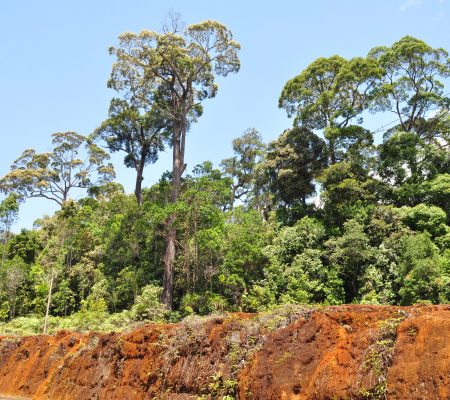
In this section, you can find information on the major soil associations that occur in the forest reserves. It is a well-known fact that soil associations greatly influence the forest that grow on them but rarely do foresters use soil information in their decision-making processes. In our vegetation surveys, soil association information is used to determine the original forest type of a logged-over (or over-logged) area by comparing with other forest areas with similar soils. The resulting information can be used by forest managers, for example, to plant the right trees in rehabilitation programmes of very degraded forests.
Generally, natural forests with similar soil associations will have similar forest types. However, other factors like differences in altitude, distance apart, landform and location are also needed when comparing areas with similar soil associations.
The descriptions of the soil associations in the linked pages are adequate without going into soil classification in detail. They are described in the following order:
FOREST RESEARCH CENTRE
MILE 14, JALAN SEPILOK
P.O.BOX 1407 90715
SANDAKAN SABAH
MALAYSIA
Tel: +6089 531522
Fax: +6089 531068
caims.sabah@gmail.com
The information in this site is intended solely for personal use by a user who accepts full responsibility for its use. While we have taken every precaution to ensure that the content of this site is both current and accurate, errors can occur.
The maps contained in this site should not be used for navigation purposes. In all cases, you should consult Sabah Forestry Department for advice concerning specific matters before making any conclusions related to information obtained from this site.
© 2025 CAIMS Sabah.